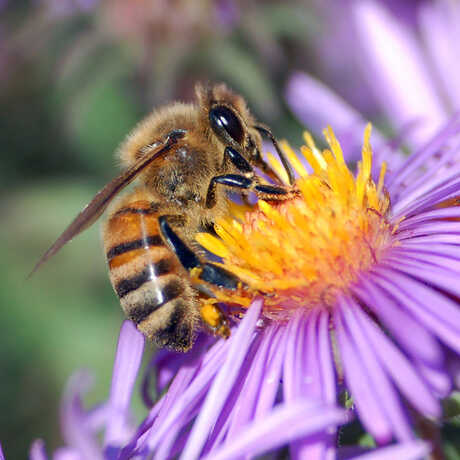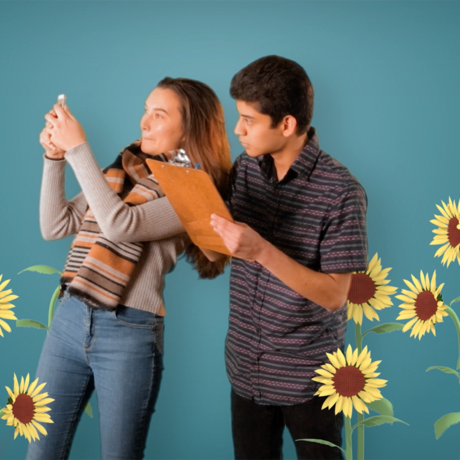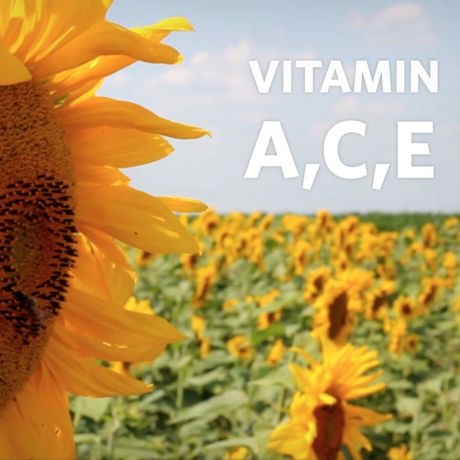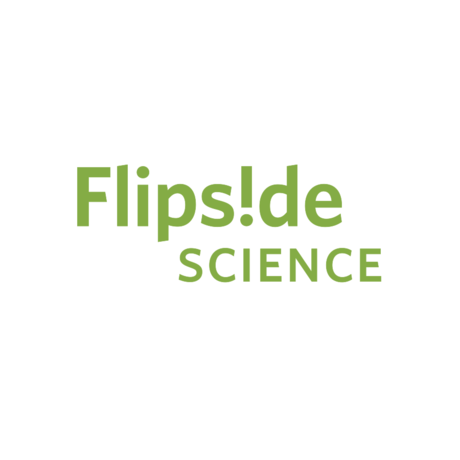Pollinators like bees, birds, and bats contribute to the biodiversity and resilience of ecosystems and benefit people. What can we do to protect them?
About This Video
Grade level: 6-10
Length: <5 minutes
Next Generation Science Standards: MS-LS1.B, MS-LS2.A, MS-LS4.D
Video Discussion Questions:
1. What is pollination? How can it occur, and what are the roles of animals in pollination?
2. An ‘ecosystem service’ is a benefit that an organism or ecosystem provides to people. Is pollination an ecosystem service? Why or why not?
3. Why/how do you think pollinators contribute to the biodiversity and resilience of ecosystems? Provide an example.
4. What are some of the threats and challenges facing some pollinators?
5. What can we do to help and protect pollinators like bees and butterflies?
Pollination Investigations
Create a buzz around pollinators in your classroom! Check out our activity ideas below that you can use in conjunction with this video:
Flowers Seeking Pollinators

Why are there so many different types of flowers? How do flowers attract pollinators?
In this activity, students will learn about plant reproduction and use real data to construct explanations about which flowers are the most attractive to different pollinators.
Prep time: 10 minutes
Activity time: 90 minutes
Next Generation Science Standards: LS1.A, LS1.B, LS2.A
Photo credit: John Severns
Bee a Citizen Scientist!

Pollinator BioBlitz
Programs like the Great Sunflower Project use data from citizen scientists to identify where pollinators need help. Citizen scientists can help document the distribution of pollinators by participating in a BioBlitz. A BioBlitz is a short and intense period of biological surveying where groups of volunteers come together to conduct a field study of species in an area.
Challenge your students to plan a class or school BioBlitz around your school grounds or neighborhood. Species can be documented using the iNaturalist app that is compatible with all mobile devices.
- Making Predictions: Ask your students to make predictions about the distribution of pollinators in their schoolyard or neighborhood vs. the distribution of plants that require pollinators.
- Analyzing and Interpreting Data: After the BioBlitz, students can analyze their data to see if the species they documented matched their predictions.
- Communicating Results: Encourage your students to communicate their results and recommend pollinator-friendly actions to their schoolmates or the community through a social media campaign, blog, or public service announcement.
Pollination and Human Nutrition

Obtaining and Evaluating Information
Write the following Focus Question on the board and have students write a brief reflection on it in their notebooks: How do pollinators relate to public health?
Lesson 1: Pollination and Population
1. Hand out Figures 1a and 1b to your students. Have students talk to a partner about what they notice and wonder about the figures.
2. Give each pair two colors of sticky notes, and have them write individual observations about the figures on one color and questions they have about the figures on the other color. Collect all of the sticky notes and group them by similarity on the board.
3. Lead a class discussion about the students' observations and questions. After the class discussion of Figures 1a and 1b, your students should be able to make the connection between geographic regions of pollinator dependency and population. Here is an example question you can ask to help your students work towards this understanding: What do you think might happen if the number of pollinators responsible for the production of vitamin A, iron, and folate declines? Would this affect people? If so, where?
Lesson 2: Pollination and Nutrition
1. Hand out Figure 2 to your students. Give them a few minutes to study the table and familiarize themselves with the information in it. Ask students a few questions to check that they know how to read the table. For example: What percentage of our vitamin C produced by crops is dependent on animal pollinators? How do you know?
2. Play a game of 'Agree/Disagree', where students hear a statement and then choose a side of the room based on whether they agree or disagree with the statement. For example: We rely on animal pollinators for a large proportion of our vitamin A. After examining and discussing Figure 2, students should be able to describe how pollination is important for providing us with several essential vitamins and minerals.
Lesson 3: Pollination and Fruit Maturation
1. Hand out Figure 3 to your students, and have them work with a partner to write down what they notice about the different strawberries in the figure. Then, pass out the Reflection Worksheet for your students to fill out.
2. Lead a final class discussion that ties together all three figures using the questions from the Reflection Worksheet as a guide.
Figure sources:
1a. Chaplin-Kramer et al., 2014; 1b. NASA Earth Observations; 2. NIH EHP: Pollinator Power; 3. UC-Berkeley News
Connections to the Next Generation Science Standards
While this video doesn't necessarily cover the following standards in depth, it is a compelling resource you can use to supplement your curriculum that does.
Disciplinary Core Ideas (Grades 6-8)
MS-LS2.A: Interdependent Relationships in Ecosystems
MS-LS2.C: Ecosystem Dynamics, Functioning, and Resilience
MS-LS4.D: Biodiversity and Humans
Crosscutting Concepts
Cause and Effect
Stability and Change
Our Hungry Planet: About This Unit
To feed our growing world, we need innovative solutions. In this unit, we'll explore environmental issues related to the food we grow and eat. We'll review topics from food waste to urban farming, and learn how simple choices we make impact our planet. This unit introduces students to the process of design thinking, and culminates in a design thinking challenge related to food systems issues.
Browse all materials:
- Activity: Food for Thought
- Activity: Exploring the Impacts of Feeding the World
- Activity: Rapid Brainstorming: Improving Our Global Food System
- Activity: Sustainable Food Solutions: Weighing the Pros and Cons
- Video: Urban Farming
- Video: Vertical Farming
- Video: Reducing Food Waste
- Video: Think Before You Eat
- Activity: Our Hungry Planet: Design Thinking Challenge
- Supplemental video: What's Up With Your Gut Microbiome?
- Supplemental video: Why Protect Pollinators? [you are here]
- Supplemental video: Bugs for Breakfast
Resources
NASA Video: Sting of Climate Change
By comparing bee data to satellite imagery, NASA research scientist Wayne Esaias uses honey bees as tiny data collectors to understand how climate change is affecting pollination and plants.
bioGraphic Video: Can Mushrooms Save the Honey Bee?
A blood-sucking mite is wreaking havoc on honey bees—but scientists have discovered a surprising new way to fight back.
